If you look at any modern German coin, in addition to the “D” indicating it comes from Deutschland, there’s another letter: A, D, F, G, and J. These are the German mint marks. But the selection of these letters seems a bit random, doesn’t it? Why isn’t there a C, or E? Today, we’ll see where these letters come from, how each German mint got its own, and what happened to the ones they skipped.
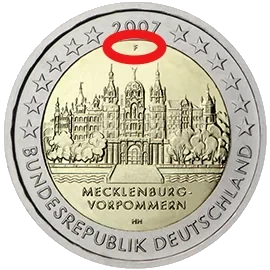
The mints of Germany that still exist
Today, Germany has five mints producing coins. It is, by far, the country in the European Union with the most mints, and the one that strikes the most euro coins.
Each of the five German mints is assigned a letter, which serves as an identifying mark of where the coin was manufactured. They are:
- A: Berlin
- D: Munich
- F: Stuttgart
- G: Karlsruhe
- J: Hamburg
The Stuttgart and Karlsruhe mints belong to the same company, the Staatliche Münze Baden-Württemberg (State Mint of Baden-Württemberg), while the Berlin, Munich, and Hamburg mints are independent companies.
As you may have noticed, there seems to be a somewhat alphabetical order used, but it is neither complete nor sequential. And you might be thinking… why such a mess? Why not use the initial of the city and label them B, M, S, K, and H?
How each German mint got its letter
Well, as with almost everything in numismatics, to understand why they use that non-sequential alphabetical order, we have to go back a few centuries.
Let’s travel to Prussia in the year 1749.
The beginning of the system: Berlin earns its A
In 1749, Prussia had seven mints: Berlin, Breslau, Cleves, Aurich, Königsberg, Magdeburg, and Stettin.
They were privately owned, minting currency for the state through contracts. As you can imagine, having the entire monetary production of your country in private hands is not advisable at all.
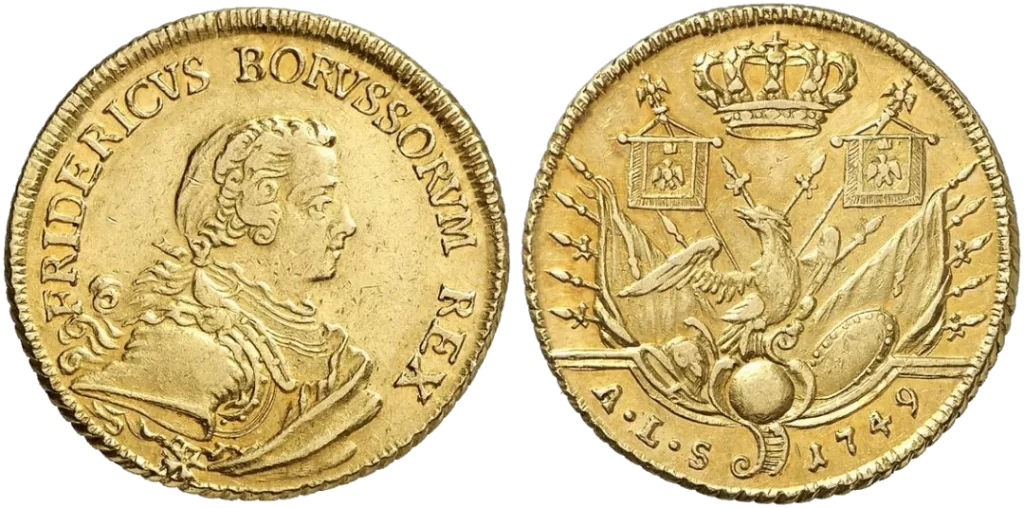
So, in 1750 and 1764, advised by the mint director Johann Philipp Graumann, King Frederick II the Great implements two major reforms in the production of Prussian coins.
What these reforms do, basically, is to nationalize the mints. They stop being privately owned and become property of the Prussian state. And to make it clear, the mint marks are changed from being the private mark of the mint director in charge at that moment, to being a letter in alphabetical order, which would not change even if the bigwig of the mint changed.
The sequence chosen for the assignment of letters was the order of nationalization of the mint.
- A: Berlin
- B: Breslau (today Wroclaw, in Poland)
- C: Cleves
- D: Aurich
- E: Königsberg (today Kaliningrad, in Russia)
- F: Magdeburg
- G: Stettin (today Szczecin, in Poland)

Over time, some of these mints closed down, leaving their letter vacant. For example, in 1818, a mint was opened in Düsseldorf, which inherited, not so coincidentally, the D from Aurich, which had shut down in 1763. And others, well, they were conquered, like Hannover, which would carry the “B”.
From Prussian Mint to German Mint
On January 18, 1871, following his victory in the Franco-Prussian War, King Wilhelm I decides to rub some salt in the wounds of the French by proclaiming the creation of the German Empire in the Hall of Mirrors at the Palace of Versailles.

On that very same January 18th, four different currencies were in circulation across the territories that made up the new German Empire, resulting from various treaties among the myriad of bishoprics, duchies, kingdoms, and Hanseatic cities that formed the Zollverein, the customs union of German states implemented in 1834:
- The Vereinsthaler, used in the north of Germany, including Prussia.
- The South German Gulden.
- The Bremen Thaler.
- The Hamburg Mark.
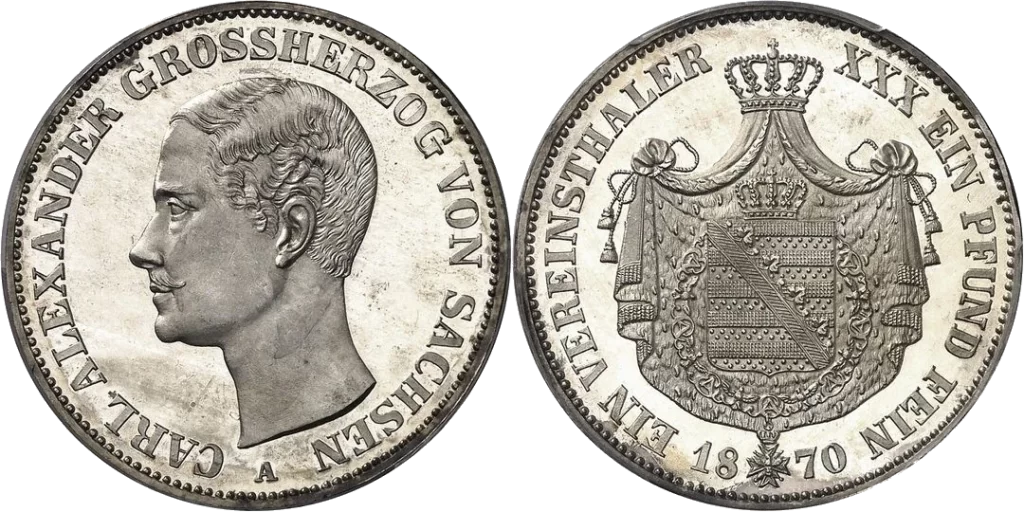
Although these coins were not directly interchangeable, those treaties signed since 1834 had established equivalences in weights, fineness, and measures, which, with the advent of the Empire, allowed for a quick transition of the monetary system towards complete unification.
And on December 4, 1871, that is precisely what happens: the German Mark is born.
Wilhelm I orders the minting of 10 and 20 Mark gold coins that will serve as the basis to establish a complete monetary system based on them. And with those coins, he does two things: he abandons the silver standard to adopt the gold standard, and for the first time in Germany, implements the decimalization of the currency, with 1 Mark equaling 100 Pfennig. Its circulation would begin in 1872.
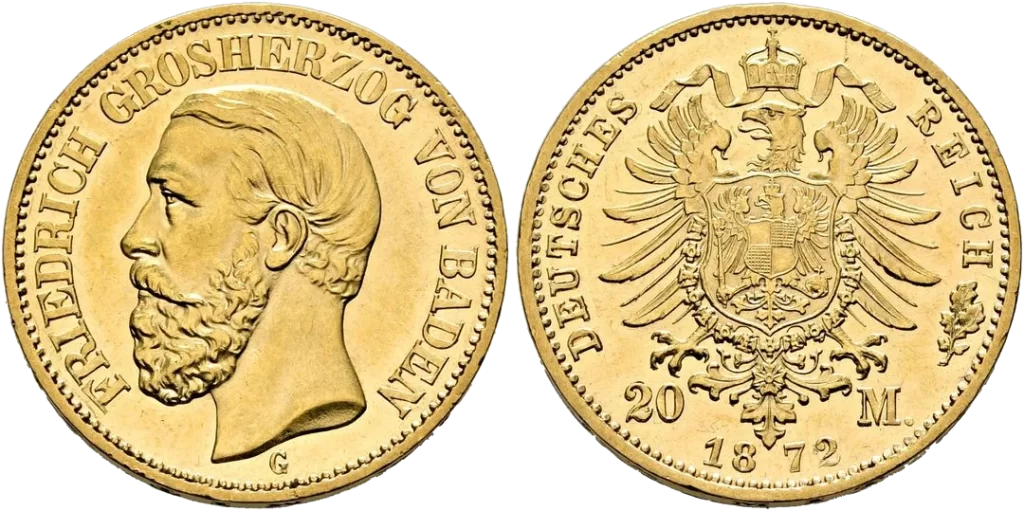
In 1873, the next step is taken: the monetary cone of the German Imperial Mark is established, and a deadline is set for the disappearance of the rest of the currencies (except for the Vereinsthaler, which remains for international trade): January 1, 1876.
Who is going to mint all those coins?
One of the major debates about the currency of the new empire was who exactly was going to mint all the coins needed for the transition: whether it would be the German Empire or each of the states that made it up. Traditionally, coin minting had been one of the major rights of the states that made up the Holy Roman Empire.
So, after much discussion, negotiation, and controversy, it was finally decided that the states themselves would mint the coins, under guidelines provided by the bureaucratic apparatus of the Empire.
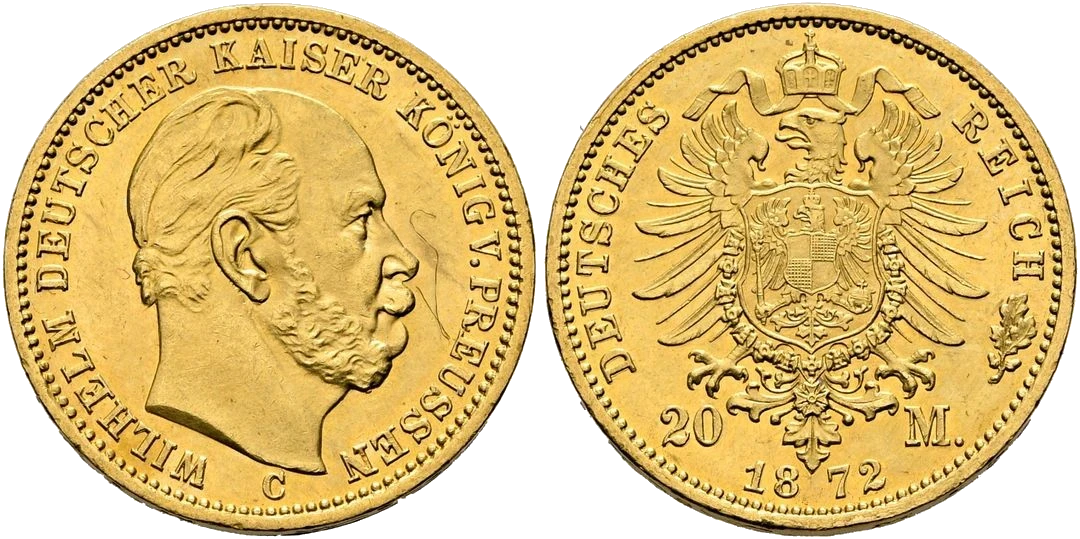
And which states would mint them, specifically? Well, all those that wanted to, voluntarily. And seven states wanted to: Prussia, Bavaria, Saxony, Württemberg, Baden, Hesse, and Hamburg. The decision that each could mint if they wanted was accompanied by the adoption of the Prussian-style mint marks, with a single letter.
That order is not random, by the way. It’s the order in which they appear in Article VI of the German Constitution of 1871, arranged from largest to smallest according to the number of votes they had at that time in the Bundesrat, the upper house of Germany.
The rest of the letters for the German mints
This constitutional order precisely determined which German mint carried which letter. Since Prussia and its provinces appeared first on the Constitution’s list, their mints would carry the first letters. Bavaria was second, so it would carry the next letters. Saxony was third, so it would carry the letters after Bavaria. And so on.
This is the list of German mints as established in 1871, the state they belonged to, and the order of that state in the 1871 Constitution:
- A – Berlin (Kingdom of Prussia, 1st)
- B – Hanover (Province of Hanover in Prussia, 2nd)
- C – Frankfurt (Province of Frankfurt in Prussia, 3rd)
- D – Munich (Kingdom of Bavaria, 7th)
- E – Dresden until 1887, then Muldenhütten (Kingdom of Saxony, 8th)
- F – Stuttgart (Kingdom of Württemberg, 9th)
- G – Karlsruhe (Grand Duchy of Baden, 10th)
- H – Darmstadt (Grand Duchy of Hesse, 11th)
- J – Hamburg (Hanseatic City of Hamburg, 30th and last)

The letter I was not used because it could be easily confused with the letter J, and there were plans to use the letter K as a mark for Strasbourg after the annexation of Alsace-Lorraine, but never materialized.
Some mints closed over the years, and their letter was retired, but the system remains to this day. In fact, even with the division of the country into West and East Germany during the Cold War, the letter system was maintained on both sides (Berlin and Muldenhütten on the communist side, the rest on the capitalist side).
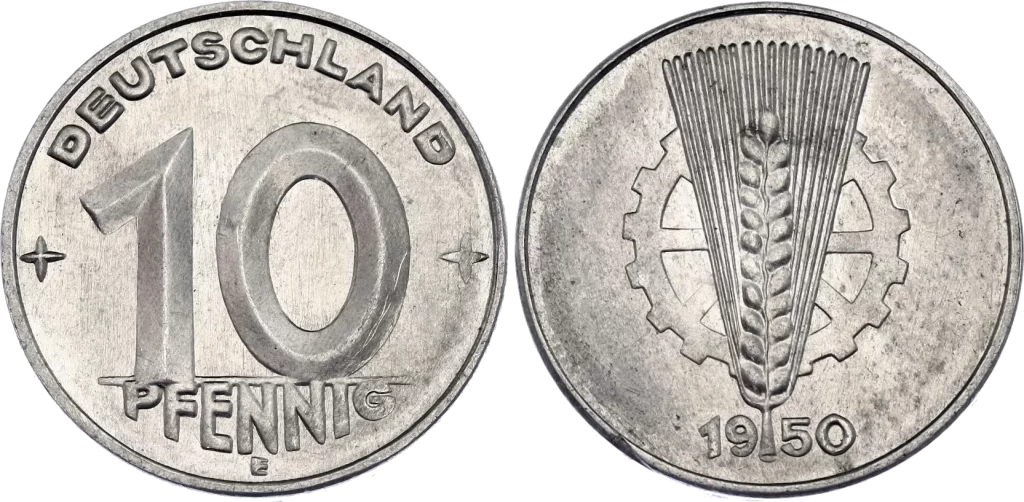
So now you know, the reason a G appears on the 2024 German commemorative 2 euro coin is because of a law that’s 150 years old.
But be aware, there are two historical exceptions.
The exceptions: Tabora and Vienna
The first exception is the emergency mint in the German African colony of Tabora in 1916 and its really cool rupees. They didn’t have an assigned letter, and given the rudimentary nature of the process and how brief it was, there was no time to assign one. So, they used the “T” for Tabora.
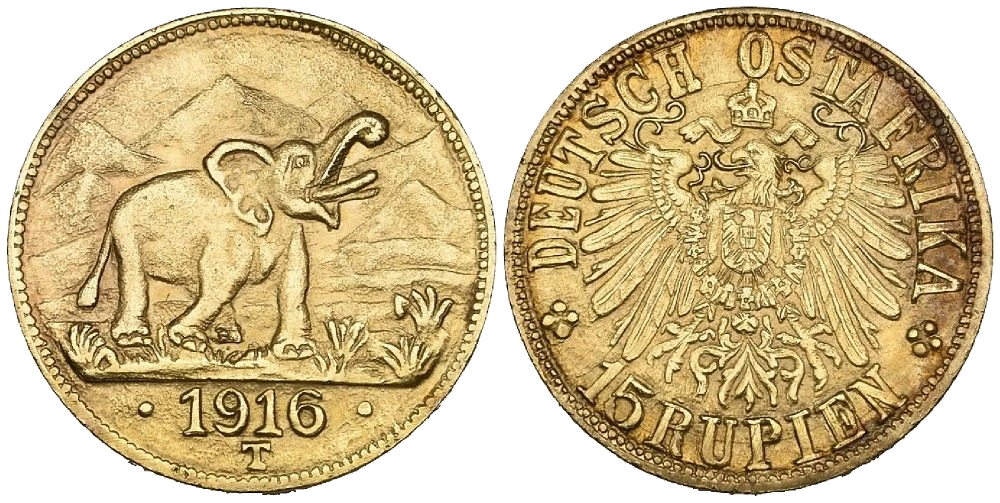
The other exception took place in Nazi Germany.
By 1878, the Hannover mint, which used to carry the letter B, had already closed. And when Hitler annexed Austria in 1938, that letter B was assigned to the Vienna mint. When Austria was liberated in 1944, Vienna dropped the B.
Complete list of German mint marks
To finish on a good note, I’ll leave you here a complete list of the letters in the German mint marks, including all periods. It’s an image, so you can save it for your personal use and share it (giving me credit, please!) if you want.

And well, as you can see, although today we know the sequence A, D, F, G, and J by heart, there were indeed mints in Germany with the letters C, E, and even T. It’s a good thing they haven’t survived to our days, because if it’s already difficult to collect coins from five mints, imagine doing it with ten.